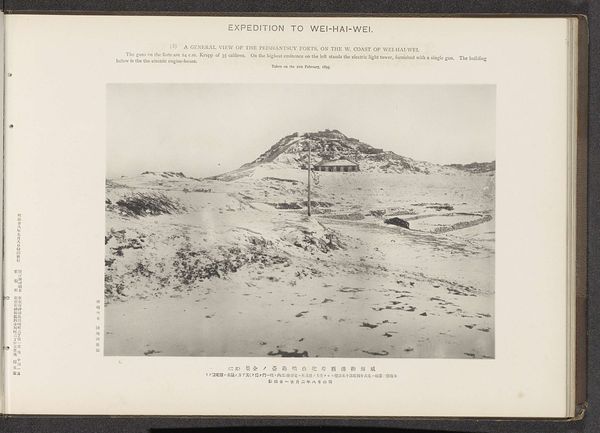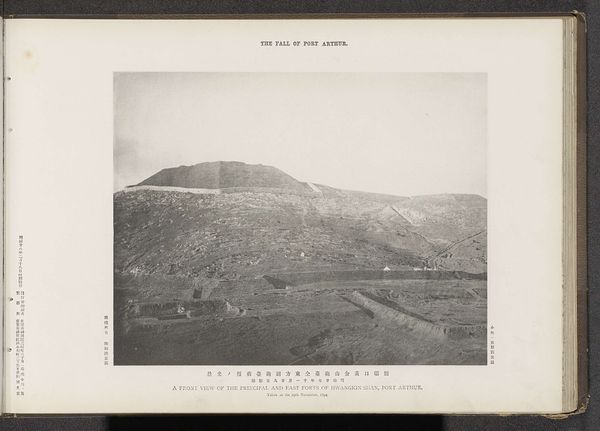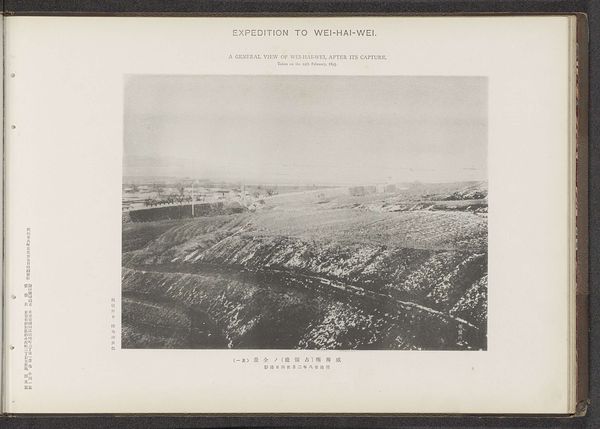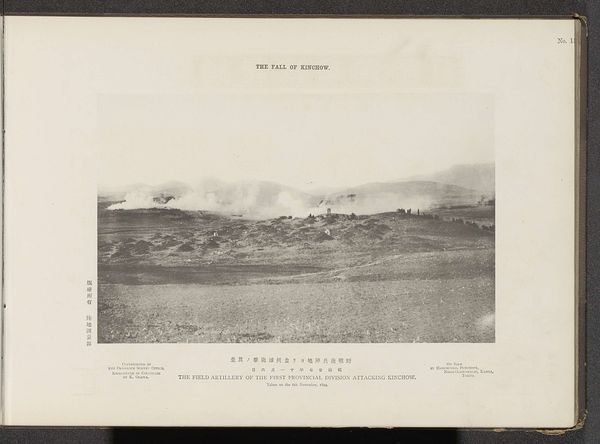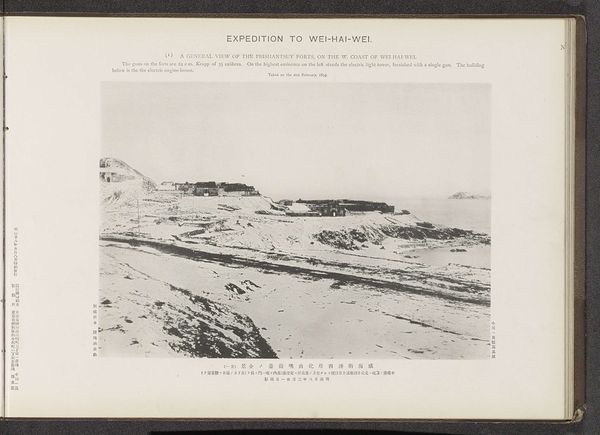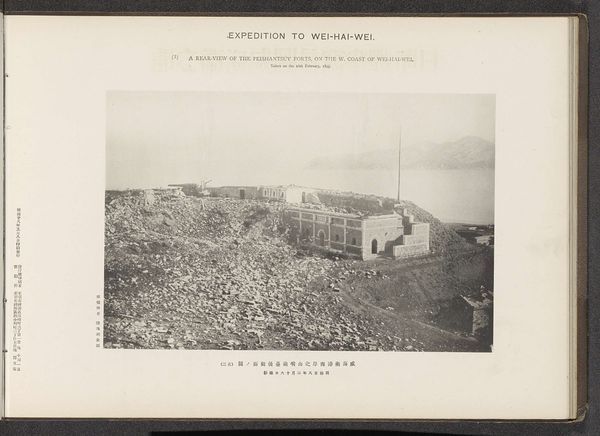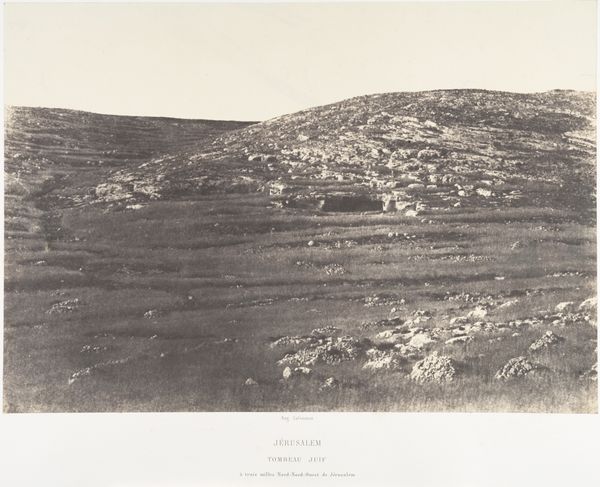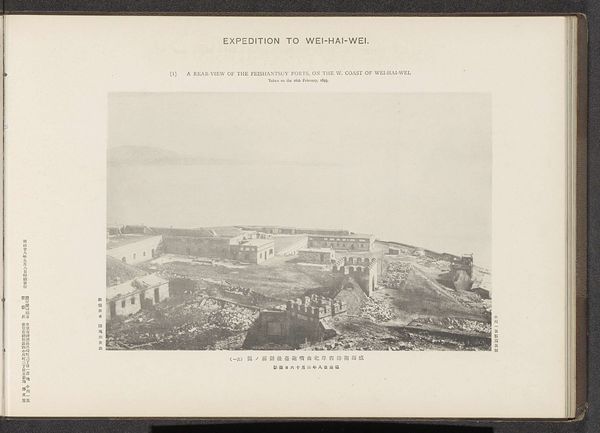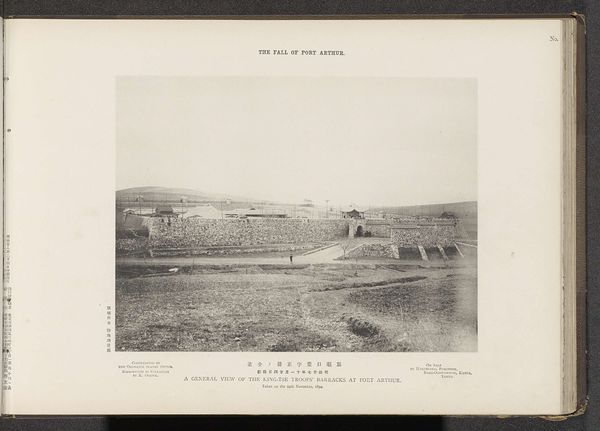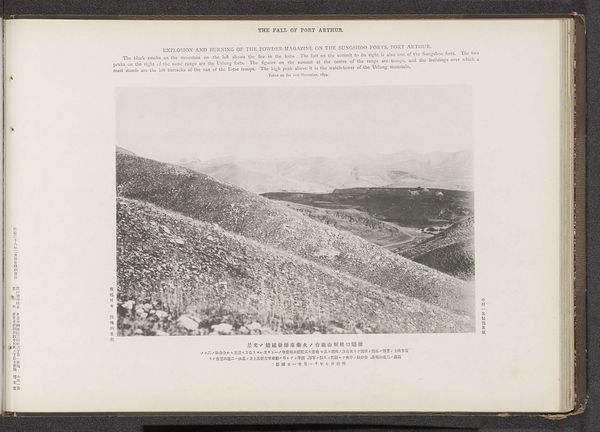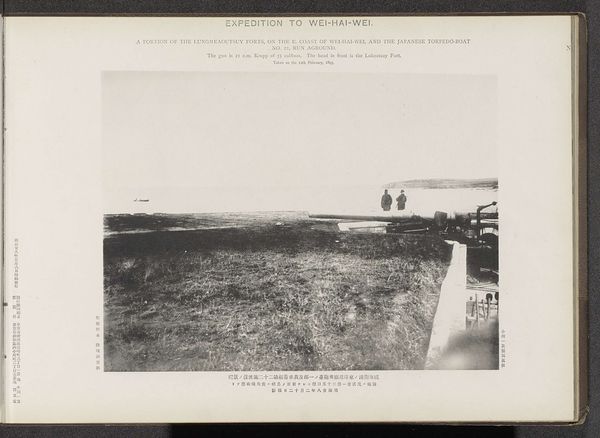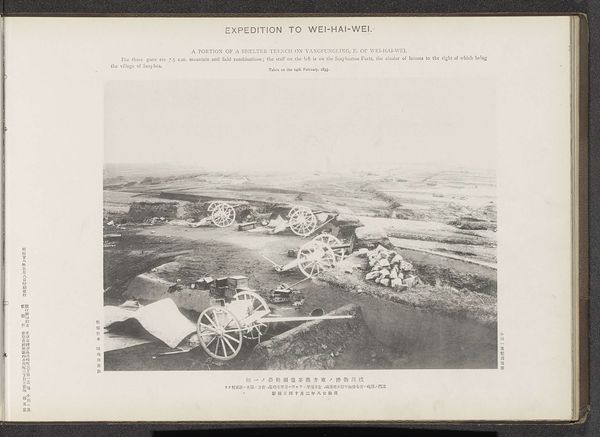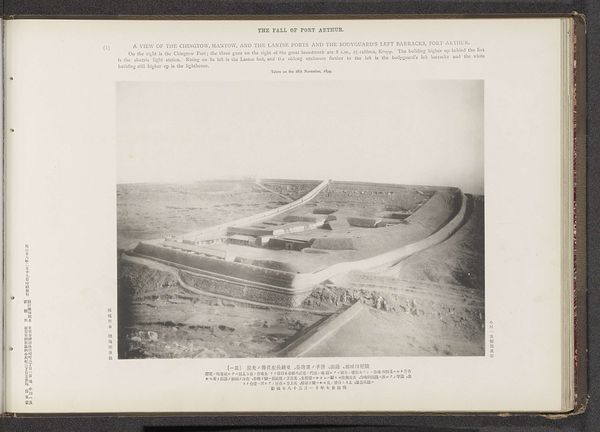
photography
#
landscape
#
photography
#
orientalism
Dimensions: height 202 mm, width 283 mm
Copyright: Rijks Museum: Open Domain
Curator: The work before us is a photograph entitled, "The signal and electric light towers on Liukung Island," likely captured around 1895 by the Ordnance Survey Office. What’s your first impression? Editor: Bleak! A bit haunting, really. There's this stark, windswept feeling to the whole scene, like civilization clinging precariously to these barren hills. That lone tower... it almost feels like a desperate plea against a vast nothingness. Curator: I see what you mean. As a landscape, it's almost devoid of traditional "beauty," yet compelling in its portrayal of technology asserting itself onto nature. Those towers, symbols of modernity, are plunked right down on these ancient forms. The signal tower speaks to me of control, navigation, an outward gaze... even intrusion. It represents both the promise and potential imposition of outside forces. Editor: Absolutely. Notice how the light poles practically "charge" the top of that structure to become a kind of watch tower. Culturally speaking, in its composition there is an imbalance, suggesting the shift in global power, this quiet picture screams with ambition, as they monitor all aspects of travel around them, suggesting new modes of dominance with looming technology. The image offers us an artifact to observe not just the building, but rather its new modes of domination. It becomes very loud. Curator: Loud indeed. While seemingly objective, as a landscape image created during a specific colonial context, it carries echoes of power dynamics. The act of surveying, of mapping, of capturing a landscape with a lens is never a neutral one. Even the "ordinance" itself holds weight as the governing rules set by those in charge during those eras. What would happen when electricity begins its course? That moment is what makes it feel timeless, like our era isn't too far off. Editor: It's interesting to reflect how we see the signal towers themselves...are they an imposition? A source of hope? It's easy to judge these historical artifacts, but by recontextualizing, and engaging the nuances within them, there can be potential for contemporary exploration, or personal reckoning within those eras. It feels very self-reflective. Curator: That is well said. Perhaps our unease, then, comes from a place where technology feels uncertain in every new day. Perhaps, that signal is still relevant to our today.
Comments
No comments
Be the first to comment and join the conversation on the ultimate creative platform.
